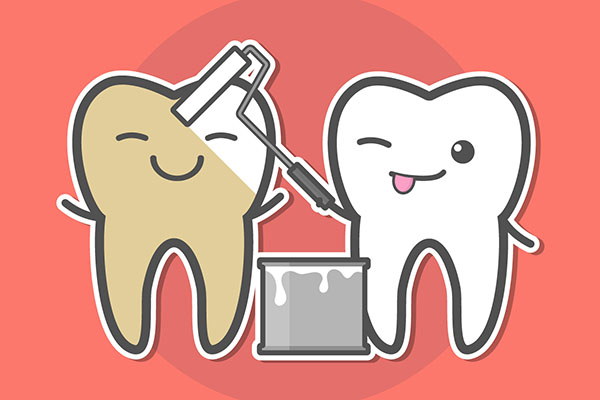Smile Makeover With Porcelain Versus Composite Veneers

Patients interested in cosmetic dental treatment may consider a smile makeover. During this procedure, a dentist transforms a patient's smile using restorations. People who want to improve certain aspects of their smiles, such as misshapen teeth, slightly crooked teeth, chipped teeth, discolored teeth, and gaps in between their teeth, may want to consider veneers. These are thin shells that are applied to the front of the teeth to cover up imperfections.
Dental veneers, a popular treatment, are commonly made of two materials: Porcelain and composite. There are advantages to both kinds, but patients should also be aware of the disadvantages. Consider these facts about these two materials.
Composite veneers
Dentists often call composite veneers chairside or same-day veneers. These restorations, made of a resin-based material, come in multiple shades. The patient and dentist determine what size, shape, and color the veneers should be. The dentist prepares the tooth by slightly shaving down the front surface. Then they bond the composite material to the tooth.
Advantages
Composite veneers are an attractive option for many patients because the procedure does not require multiple visits, and it is considered minimally invasive. The patient leaves with veneers in only one day. These restorations are very natural-looking, and in some cases, the dentist does not have to remove as much tooth structure as with porcelain veneers. Resin-based veneers are easier to repair, as the dentist can often add more material if one of the veneers chips. Composite veneers are also less expensive than porcelain ones.
Disadvantages
A smile makeover is a big decision. Patients need to be aware of the benefits and the limitations of treatment. Composite veneers do not last as long as porcelain ones. On average, patients can expect to have these restorations for five years. Because the dentist has shaved down the teeth, the procedure is irreversible, so the patient will always need a veneer or crown to cover the teeth. Fortunately, though, composite veneers are easily replaced, or the patient can switch to porcelain veneers later.
Porcelain veneers
According to the California Dental Association, a dentist first invented dental veneers in the 1920s. However, most dentists did not adopt the technology until the 1980s-90s. Many patients select dental veneers to repair cracked teeth. Others choose this treatment to make teeth appear larger; some request these restorations to change the shape of the teeth. Dental laboratories make porcelain veneers from an impression of the patient's teeth.
Advantages
One advantage of porcelain veneers has better stain resistance compared to composite veneers. This stain resistance is essential because teeth-whitening agents do not work on dental restorations. They also are better at covering up darker-stained teeth and more obvious imperfections such as incorrectly positioned teeth.
Porcelain veneers have a wide range of color selections, and patients can choose the shade they prefer for a natural look. These restorations last longer than composite veneers; patients can expect to have them for 10 or more years.
Disadvantages
As with any dental treatment, porcelain veneers do have some downsides. They are a more expensive option, although their longer lifespan helps counteract this disadvantage. Dentists usually have to remove more tooth structure for porcelain veneers. This means the patient will always need to have veneers to cover this up.
The final results using porcelain veneers are not as immediate as composite ones. Because the restorations are made in a dental lab, the patient must wait a few weeks to get the final product. However, a dentist can fabricate temporary veneers so that the patient's smile looks natural while waiting for the final result.
Proper care of veneers
No matter which type of veneers a person chooses, there are some ways to extend their life. Avoiding hard foods, ice chewing, and pen chewing will help to prevent chipping of the veneers. To prevent and minimize staining, dark liquids, such as coffee, tea, sodas, and red wine, should be minimized. Other tips for proper care include:
- Brush teeth right after consuming dark-colored food or drink
- Use a toothbrush with soft bristles
- Use toothpaste specifically designed to polish veneer materials
- Avoid baking soda-containing toothpaste
- Avoid smoking
Conclusion
A smile makeover is a rewarding treatment for patients who want to feel confident smiling again. With a variety of methods available to fix certain cosmetic issues, patients should research the pros and cons of each before making a decision. To learn more about dental restorations like veneers, patients should schedule a consultation with a dentist.
Request an appointment here: https://www.southfloridadentalarts.com or call South Florida Dental Arts at (305) 230-4041 for an appointment in our Miami office.
Check out what others are saying about our dental services on Yelp: Dental Veneers and Dental Laminates in Miami, FL.
Recent Posts
In cosmetic dentistry, there are all kinds of approaches used to improve smiles, but porcelain veneers happen to be one of the most popular. Continue reading to learn more. Over the years as dental technology has improved, so have the techniques and approaches that are used to keep the teeth healthy and attractive.Porcelain veneers are…
Dental veneers are thin, artificial caps for your natural teeth. They can cover up stained teeth or coat over tooth chips or discolored spots. Dentists sometimes use them to reshape and fix the appearance of crooked, crowded, or overly-spacious smiles.Many people choose veneers because they offer beautiful and durable results without requiring invasive procedures. The…
When it comes to tooth restoration, two standard options include dental veneers and crowns. Dental veneers are thin covers adhered to the tooth to create a traditional and classic shape. Dental crowns, on the other hand, are caps. Dentists place crowns on top of the teeth to protect, restore or cover teeth. While both can…
Dentists recommend dental veneers for patients that are interested in fixing cosmetic concerns related to their smile. There is a range of issues that dental veneers can help treat, including but not limited to broken teeth, misshapen teeth, teeth stains, and short teeth. This review discusses what dental veneers are and how they can improve…


